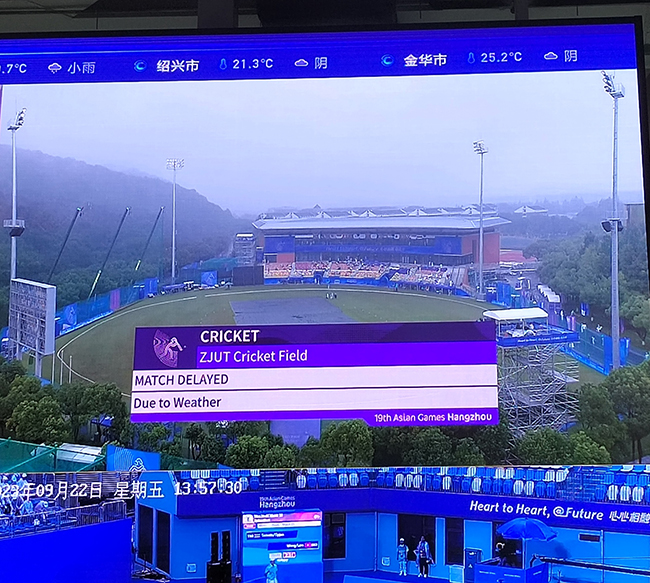
Updated: 17-11-2023
Source: CMA
The National Meteorological Centre (NMC) undertakes the responsibility of issuing forecasts and warnings for 13 different types of hazardous weather conditions within the next 24 hours. These include typhoons, heavy rain, severe convective weather, blizzards, cold waves, gales at sea, sandstorms, low temperatures, high temperatures, frosts, ice storms, heavy fog, and haze. Additionally, NMC collaborates with the departments of natural and water resources to issue warnings for 4 categories of meteorological disasters, which are floods in small and medium-sized rivers, flash floods, geological disasters, and agricultural meteorological disaster risks.
In recent years, NMC has continuously optimized and improved its dynamic tracking of heavy rain, fine-grained analysis of extreme events, and core forecasting techniques. As a result,the accuracy of heavy rain forecasts has increased annually under various lead times. Based on the intelligent grid precipitation and meteorological disaster risk warning, the small and medium-sized river, flash flood, and geological disaster warning operational system has also been continuously improved. A distributed hydro-meteorological model and a disaster risk model based on the hydrological model at the basin level have been constructed, effectively enhancing the guidance capability for hydro-meteorological operations at all levels of weather stations.

The Central Meteorological Observatory has been continuously developing typhoon monitoring and forecasting techniques, with a consistently higher forecast accuracy for typhoon paths in the northwest Pacific compared to the United States and Japan. The deviation in the 24-hour forecast has been reduced to around 70 kilometers, and the accuracy of the typhoon intensity forecast has also increased over time. The Observatory has also initiated global typhoon monitoring and developed forecasting techniques with the capability to achieve global coverage by 2025.
After over a decade of development, the Central Meteorological Observatory has gradually established an operational system to support convective weather forecasting, achieving technical breakthroughs in comprehensive monitoring, analysis, and short-term forecasting of convective weather. The forecast accuracy for thunderstorms, short-term heavy precipitation, thunderstorm gales, and hail has been consistently improving every year. Core key technologies have been developed, including deep learning for extrapolating radar echoes, automatic identification and classification of high-impact weather (downbursts, tornadoes), and potential forecasting for convective activity.
The Central Meteorological Observatory is responsible for the operation of the WMO Regional Specialized Meteorological Center for Aerosol Prediction in Asia (RSMC-ASDF Beijing). Based on the fusion of Fengyun satellites and ground stations, real-time monitoring of dust storms in Asia is carried out. The development of multi-model integration prediction and objective classification prediction technology products for dust storms is based on the China Meteorological Administration's self-developed CMA-CUACE-Dust dust model and various European, American, Japanese, and Korean models. The dust model can predict dust storms up to 3-5 days in advance, and its concentration forecast can greatly assist forecasters in various countries. RSMC-ASDF Beijing also pays attention to global dust weather by sending briefings and other means to warn of important dust storm weather processes around the world, playing a positive role in improving the ecological environment of countries along the Belt and Road.


















